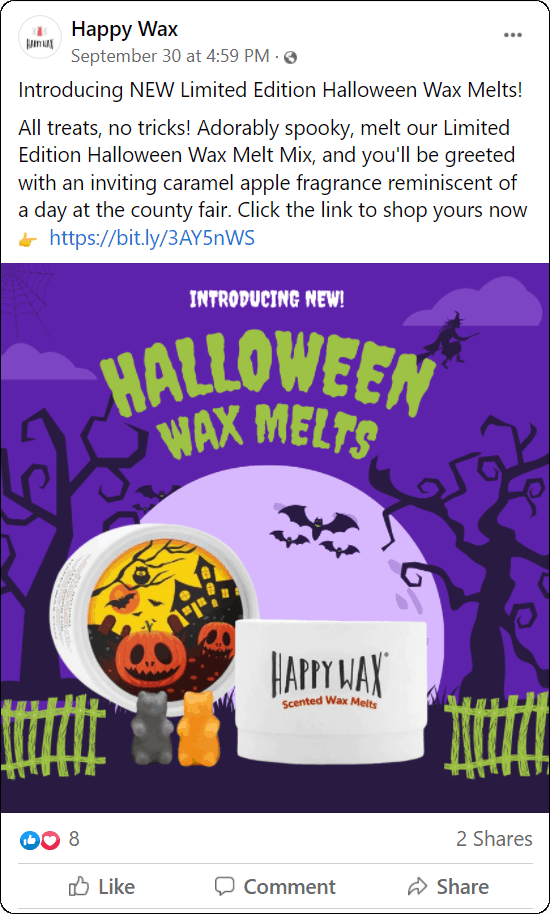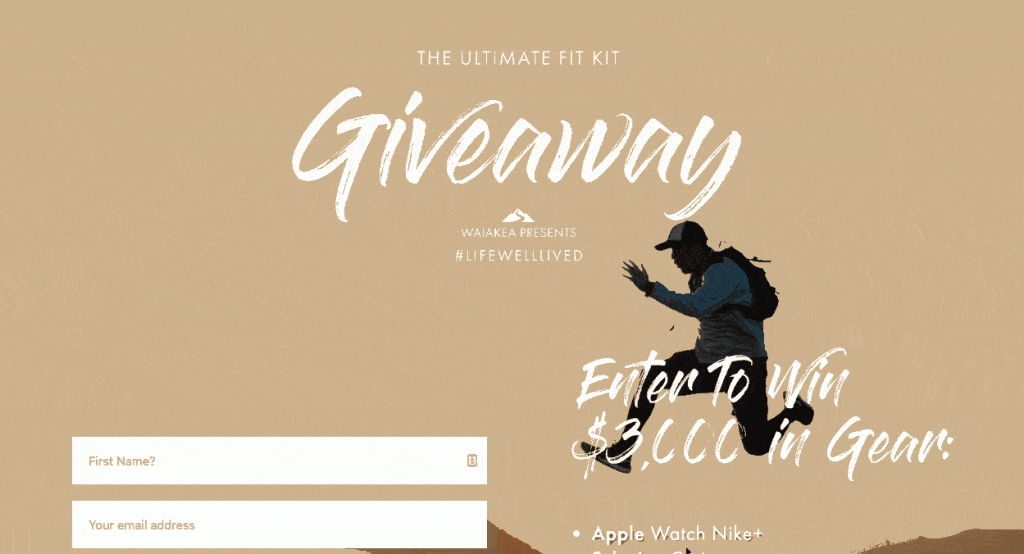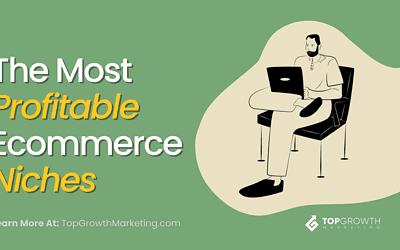- Make Your Shopify Store Attractive For Search Engines
- Promote Your Shopify Store on Social Media
- Promote Your Shopify Store With Paid Ads
- How to Promote Your Shopify Store With a Referral Program
- How to Promote Your Shopify Store With Social Media Contests and Giveaways
- How to Promote Your Shopify Store With Top Growth Marketing
Framing that first dollar you earn from a Shopify store is a wonderful feeling.
But, it’s only as great as the next one and the next. And to keep up the pace, you’ll need to find scalable and repeatable ways to encourage more site visits.
Luckily, there’s a whole digital marketing ecosystem dedicated to doing just that.
This article will decode it for you and teach you how to promote Shopify store sales reliably.
Make Your Shopify Store Attractive For Search Engines
The foundation of any promotional effort should be to make your site as discoverable as possible. And, for most stores, that means making it attractive to Google as it’s the most relevant search engine.
Before you get into optimizing your site, set up Google Analytics and Google Search Console.
These are the essential tools to track your site’s comings and goings. You’ll also be able to check for any errors and areas of your site that need attention.
You don’t need to be a search engine optimization guru to get this right—about 80% of ecommerce SEO comes down to a few key elements.
Those are:
Keyword research. Find the keywords people are searching for and keywords your competitors are using. You can do that easily with Google’s Keyword Planner, which shows you which keywords in your niche people are paying to advertise.
Once you have your keyword list, make sure those keywords appear in critical places across your site, such as titles, product descriptions, and URLs.
On-page optimization. You don’t need to go too in-depth here. Shopify’s defaults cover most of the on-page optimization.
What you should pay attention to includes: page titles shouldn’t be longer than 60 characters; don’t use more than one title; include compelling meta descriptions for all your pages, and insert links between relevant pages on your site.
Link-building to relevant sources. Which sites link to yours is a big part of building trust with search engines. And you’ll need to earn or otherwise secure those links.
Link-building is a tedious endeavor, so you’ll have to be persistent. Some key elements are: creating compelling content that others want to link to; get links with reviews from creators in your niche; and, ask your suppliers or manufacturers to link to your site.
There’s a lot to unpack there, but if you do those three things right, search engines will more or less figure out the rest.
Promote Your Shopify Store on Social Media
Ask any digital marketing professional about the best way to promote an online store, and the answer will invariably be social media.
And, we agree with that.
However…
Social media marketing is a broad field, and just about everyone is already using it. That means you’ll need a structured approach and consistency to see results.
Below, you’ll find a basic primer on ways to promote your store organically on the most relevant social platforms.
Facebook and Instagram Content
You should have a Facebook and Instagram account set up for your store before you’re even done creating it.
Facebook’s reach extends into just about every niche, and you’ll find an audience for most products.
Plus, with new social commerce options, you can allow people to shop directly through Facebook.
READ MORE>> Learn how to set up a Facebook shop to sell products from your ecommerce website.
Next, you’ll want to get acquainted with Facebook Business Manager. It’s the primary tool you’ll use to organize your site’s promotional campaigns.
As soon as you’re able, start putting content up on Facebook and Instagram and direct the social buttons on your site to your Facebook properties.
Content should include:
- Pictures and videos that tell your story. Your social media accounts should be a resource where people can quickly learn who you are and what your store is about.
- Discounts and special promotions. The best way to keep people engaged with your social accounts is to provide value, and you can do that with seasonal and time-sensitive offers.
- Product reveals and announcements. If you’re launching a new product line or bundle, always use your social accounts to build anticipation with your target audience.
- Contests and giveaways. They’re the most effective ways to reach new followers and engage existing ones. You’ll find more information about executing giveaways and contests further down.
Depending on your potential customers, content such as live streams and memes may also be appropriate.
That’s what you should post.
The other side of the Facebook content marketing coin is consistency. Get used to posting on a schedule and stick to it.
Map Your Shopify Store Onto a YouTube Channel
YouTube is next on the list of the most impactful social platforms to promote your online store. And, it’s still relatively underrated in ecommerce, making it a spectacular differentiation tactic.
As soon as you can, start mapping your store onto a YouTube channel. You may also want to make your store prettier with some exceptional Shopify web design services, too.
You can start with an introductory video. It will be the first marketing touchpoint you have with some people—so, it should be short, direct, and include:
- A brief introduction to your store and goals.
- What viewers can expect from your YouTube channel.
- A call to action to like and/or subscribe to the channel.
But, remember that…
YouTube isn’t a sales platform. Instead, people mostly use YouTube to learn about the products they might consider purchasing.
Think of YouTube as a tool to educate your target customers on what they need to know to make good buying decisions.
The type of content you should consider creating includes:
- Product reviews. Create honest reviews about the products you sell. Point out their strengths, weaknesses, and problems the products can solve.
- FAQ videos. A quick video with five to ten frequently asked questions is often worth its weight in marketing gold for mid- to bottom-of-the-funnel decision making.
- Unboxing videos. Use a video to show exactly what your customers will receive when they purchase your product.
Also, make your channel stand out with YouTube’s customization tools. Finally, keep the design elements similar to your online store theme and maintain consistency.
And, as with any other organic strategy, consistency is key.
Focus on creating short, relevant, and digestible videos regularly, and it will pay off.
READ MORE >> Optimize your YouTube videos with keywords to go the extra mile.
TikTok Advertising and Organic Content
TikTok is one of the most significant untapped resources in marketing right now.
And Shopify is the first ecommerce platform to integrate shopping experiences on TikTok. You can set up the TikTok app natively on Shopify and use it to track conversions and marketing campaigns.
And, used correctly, it could lead to massive viral growth for your online store.
For starters, create a TikTok business account. Then, use TikTok’s customization tools to match your account name and bio to your overall brand theme.
Don’t feel pressured to post content right out of the gates. Instead, take some time to look around and see what competing stores are doing.
The #ForYou and Discovery tab are a great way to get a feel for the platform.
Pretty soon, you’ll start getting a sense of what it takes to connect with your customers.
🔎 Tip: TikTok is meant to be a raw and playful video sharing platform, so it’s not a good fit for matter-of-fact, weighty content.
Content on TikTok shouldn’t be too structured. Simply look at what’s trending with your target audience and try to follow suit.
One of the easiest ways to see hockey-stick growth is by participating in hashtag challenges. Or, create your own hashtag challenge that goes viral.
For example, Bose’s #CancelTheNoise hashtag challenge resulted in over 13 billion TikTok views for the brand.
@mmmjoemele Pops is cancelling out the noise w/ @boseofficial Noise Cancelling Earbuds! #sponsored #CancelTheNoise #BoseAmbassador ♬ Cancel the Noise – Bose
Promote Your Shopify Store With User-Generated Content
User-generated content (UGC) is anything created by people who interact with your online store.
And, it’s a resource you can use to convince other people your brand is worth engaging with. Anything posted on your social media channels, your store page, or any other outlet falls under this category.
User-generated content exerts social influence on people who interact with it to take your brand more seriously.
First, you need to get some user-generated content. Some ways to do that include:
- Asking for it. You can simply ask for reviews or feedback in your post-purchase communications. If your customers are happy with their purchase, they’re likely to oblige.
- Create a branded hashtag. By encouraging customers to use your brand’s hashtag, you’re expanding your reach and it gives you a tool to audit fan accounts for usable UGC. It’s a double whammy!
- Insert actions into contests. If you choose to run contests online, include steps that allow participants to earn bonuses. Actions to earn bonuses can involve writing a review for a purchased product, using your hashtag, or other resources you can repurpose for UGC.
Those are some ways to get UGC.
But, what do you do with it once you have it?
Well, the simple answer is to share it! And here are a few concrete ways to do that:
- Add reviews to your online store. This is something you should be doing from day zero on your online store. You can use Shopify’s own review app to do so, or any of the hundreds of third-party Shopify apps purpose-built for UGC sharing.
Yotpo and Okendo are two of our favorites. - Showcase your customers’ social posts. Your customers are a gold mine of content that you can showcase on your accounts. As a result, you spend less time creating content and promote social validation!
- Put a social media wall on your store page. Social media walls are tried and true ways to promote a sense of community around any event or brand. Twitter is an especially good source of easily digestible social wall content, if your fans are active there.
Shopify apps such as Elfsight Social Feed make it simple to curate and display UGC this way.
🔎 Tip: It’s OK to curate your UGC and remove spam content. But don’t be too eager when sorting out the negative remarks. Responding to complaints is a sign of an active and responsible brand.
Promote Your Shopify Store With Paid Ads
That concludes our top recommendations for ways to scale with organic efforts.
There are certainly more avenues to growth, but those are the ones we’ve seen the most success with.
Now, we’re moving on to paid advertising and how you can use it to guide your customer journey.
Facebook and Instagram Display Ads
Once again, Facebook ads are at the top of the food chain.
A big part of that is due to Facebook and Instagram playing well with Shopify. It’s easy to integrate the two platforms and cross-promote your products between them.
Here’s an abridged version of what you need to start running Facebook ads for your shop.
Assuming your Facebook and Shopify accounts are all set up and ready, you first want to install the Facebook Pixel.
READ MORE >> Explore our guide to creating Facebook shops.
You can follow this guide to integrate your Facebook pixel with Shopify. Then, you’ll be ready to promote your products from the Facebook Ads Manager.
There’s a lot to know about how to make effective Facebook ads, but that’s outside the scope of this guide.
Need help creating, optimizing, and managing Google ads?
Instead, we’ll give you some tips about when to sell online with Facebook ads and when not to.
- Get serious about targeting. The single best way to increase your return on ad spend (ROAS) is to narrow your target audience. To do that, you’ll have to dig deeply into the many ways you can segment a custom audience.
- Nurture active customers. In many cases, a customer that has already purchased from you is the likeliest person to purchase again. Pur your Facebook pixel to use in identifying those customers and remarketing to them.
- Leverage carousel ads. Carousel ads are among the most effective formats to place physical products. Learn how to use them and optimize them for your target market.
READ MORE >> Learn about the fundamentals of effective Facebook ads.
Pinterest Ads And Promoted Pins
Pinterest isn’t right for every brand and industry.
But, most retail brands can get decent traction from promoted pins. And, if your competitors are using them, it’s a mistake to neglect Pinterest as a way to further your online marketing goals.
Lucky for you, Pinterest is yet another platform that’s partnered with Shopify. You can install an app that lets you manage all your Pinterest marketing activity.
You can even create shoppable pins from your catalog.
That way, customers can buy your products they discover on Pinterest.
People who use Pinterest spend 80% more than the average person on other social media platforms. In short, Pinterest is a channel you can’t afford to ignore—especially if you’re in the home decor, beauty, fashion, or cooking niches.
Here are some things to keep in mind when you’re creating Pinterest ads and promoted pins:
- Keywords count. Pinterest primarily serves image content to its audience. But it still uses keywords to match pins with search intent. So, don’t neglect keyword optimization in your pins.
An addendum to that is hashtags. Use them to improve your targeting in the same way you would keywords. - It’s not just about product images. Pinterest is a great channel to build your brand’s visual identity with relevant content and educate customers. Blog posts, infographics, and videos are excellent mediums to target your entire funnel through Pinterest.
- Use power words in your pins. For example, do you sell a ridonculously adorable blouse that’s so darn cute you could eat it right up with no topping? Then, tell your customers about it in no uncertain terms.
Promote Your Store With Google Ads Smart Shopping Campaigns
What do you do when you want to make a purchase?
If you’re like 85% of people, you go online to learn more about the options available.
So, there’s no way to cast a wider net than to search ad campaigns that promote your product. And Google Smart Shopping campaigns are an ideal way to do that with minimal hassle.
Pay-per-click (PPC) marketing is a mainstay of modern ecommerce, and it’s all but critical to success in ecommerce.
And, wouldn’t you know it, there’s a Shopify app to help you implement Smart Shopping.
The app builds a product feed in the Google Merchant Center based on data from your Shopify. When Google approves your products, you can set up paid campaigns and let the search engine figure out how to best reach your customers.
The basic implementation for these campaigns is straightforward. But there’s also a lot you can learn to make the most of them, and you can learn all about it here.
For the sake of brevity, we’re not getting into other search engines, but you should know that they can similarly impact sales.
Work With Influencers To Promote Your Store
Influencers are people who have large social media followings and can help promote your products. And, influencer marketing is one of the most compelling ways to market your product.
There are many ways that you can work with influencers to promote your Shopify site. For example, you can reach out to them through email or social media, provide free samples for them to use, collaborate with them on sponsored content, etc.
These collaborations are ideal marketing tools because they create authentic connections with their followers that can then become authentic connections with your brand. Put another way; you can piggyback off the trust that influencers already have with their audiences.
Here are a few tips to help you find influencer partnerships that generate immense growth:
- Think outside the niche. Look for opportunities to make your products or services available to a broader population of people. Don’t limit yourself to influencers whose audiences match yours exactly.
- Micro-influencers have the best conversion rates. Micro- and nano-influencers with a following of 1K–10K make up for their lack of reach with high trust. And, you can sometimes broker a deal with them that only involves free items for promotional content.
- Get the most out of influencer content. Once it’s made, do your best to spread the content from influencers everywhere you can. That includes your product page, social channels, and even paid ads.
READ MORE >> Case studies detailing how we used influencer marketing to boost sales.
How to Promote Your Shopify Store With Email Marketing
Marketing via email is the most cost-effective way to promote your Shopify shop. Yet, you’d be surprised at how many store owners fail to even use email marketing, let alone give it the attention it deserves.
Shopify even has integrated email marketing tools that you can access for free. You can create and launch campaigns and track results from start to finish with Shopify Email.
And Shopify’s data shows that email has the best average order conversion rate of any other major channel.
But, like everything else, there are right and wrong ways to leverage email for promotional purposes.
Here are some essential things to keep in mind if you want to run high-conversion email campaigns:
- Your email marketing is only as good as your contact list. So to get results, you need to get the right people on your email list.
Your customer accounts are a great start. Opt-in forms across your site are another excellent source of emails, as are packaging inserts and lead magnets, such as giveaways. - Do. Not. Spam. If you abuse your email list with spam, there’s no way to earn that trust back. Not only that, but you could also violate anti-spam regulations.
- Focus on cart abandonment. Cart abandonment and other lifecycle emails almost feel like you’re hacking the Shopify code when used right. Don’t just limit yourself to a post-purchase email and call it good—constantly look for opportunities to insert a relevant touchpoint.
READ MORE >> Everything you need to become an email marketing superstar in a two-hour package.
How to Promote Your Shopify Store With a Referral Program
A referral program gives your customers a chance to earn rewards by recommending your products. Often, it involves giving your customers an incentive for the recommendation.
Dropbox is the powerhouse that we know today thanks to its now-famous referral program that helped it grow 3900% in a few years.
And you can use the same tactic for your shop.
If you’ve been following along, you can probably guess how…
If you guessed “with an app,” you’re 100% right! Shopify has dozens of apps that automate referral programs. We already mentioned Yotpo in the UGC section above, and it’s a great tool for referral marketing as well.
Here are our best tips for successful referral marketing:
- Make it double-sided. Referral programs work better when both the referrer and the referred stand to gain something. It makes people feel better knowing that they’re providing tangible value with a recommendation.
- Don’t put a cap on referrals. Instead, let your customers invite as many people as they want or can for more rewards. If you’ve done your homework, each referral will produce a net profit on average.
- Make it easy. It’s enough of a chore getting people to recommend your product. If they also have to jump through hoops to do it, it’s dead in the water.
A simple rule of thumb is if it takes more than three clicks to refer, it’s too complicated.
How to Promote Your Shopify Store With Social Media Contests and Giveaways
We’ve been using contests and giveaways for years, always to great success. It’s a strategy we endorse for the vast majority of ecommerce brands.
A well-planned and well-executed giveaway quickly turns followers into advocates.
Running a giveaway is simple with–you guessed it–Shopify apps! And, there’s no shortage of third-party software that makes running one a cinch.
And, if you choose to run contests, here are a few of our best tips:
- Choose a prize that suits your goal. It hardly makes sense to give away shaving kits if you want to get more email signups from women in their twenties. Always think about what you’re trying to accomplish and who the giveaway is for.
- No longer than a month. A month is about as long as you need to make a giveaway, and most should be shorter. People don’t like to think too far ahead, and the sooner they can get their prize, the more likely they are to participate.
- When possible, lump your giveaway with other events. Holidays, industry events, and new product releases are outstanding opportunities to host a contest.
Side-tip: With all these different promotional methods and a diversity of content and products involved, you could turn to a PIM system to keep your brand presentation consistent across channels.
How to Promote Your Shopify Store With Top Growth Marketing
These are strategies that we use to get consistent results with clients.
If you want to learn more about them, or you want help implementing them, reach out to us, and we’ll give you step-by-step directions for success.
Or, leave a comment below (yes, we read all of them).








0 Comments